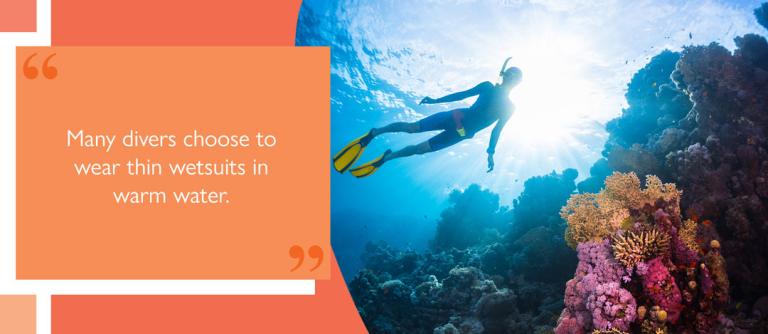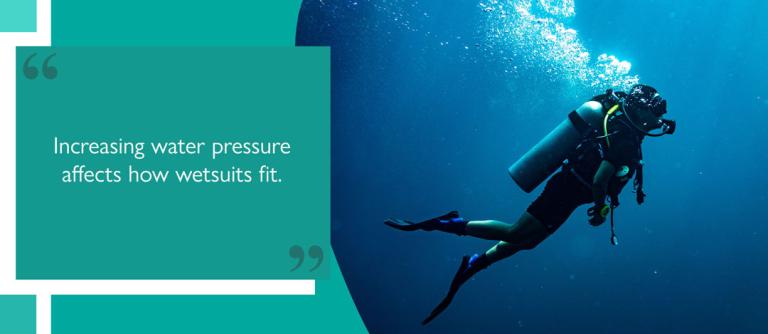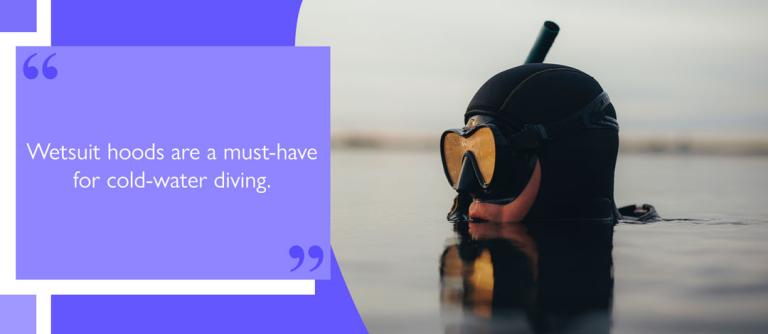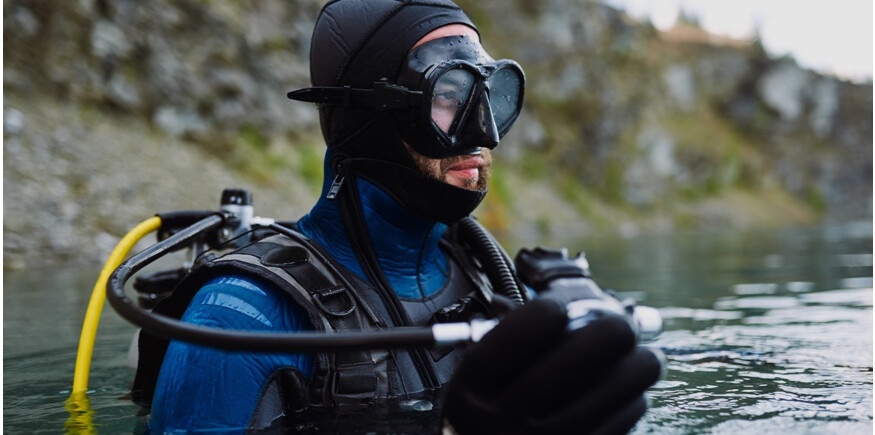Temperatures get colder the deeper you dive, making a wetsuit necessary. To ensure comfort and warmth, a wetsuit must insulate from the cold and fit well to allow the wearer to move easily.
Diving wetsuit thickness guide
Neoprene holds bubbles of gas within the material. These act as an insulating barrier to prevent the loss of body heat. This is supplemented by a layer of water trapped within the suit, next to the skin, which is warmed by body heat.
How much insulation each wetsuit provides is dictated by the thickness of its neoprene. Thicker neoprene contains more air, creating a larger insulating barrier.


Deciding on wetsuit thickness
How deep you dive and how long you will be at those depths affects the amount of insulation needed. For dives involving depth changes and varying water temperatures, match the level of insulation to the temperature at the deepest point of the dive.
When diving in cold water, as much body heat needs to be retained as possible to prevent hypothermia or shock. If you are not well insulated, energy that could be spent swimming is instead expended trying to keep the body warm, shortening dive time.
In warm conditions, it may be possible to get away with a swimming costume or shorts and no insulating wetsuit gear. However, many divers still wear thin summer wetsuits in warm water as the material offers protection from sharp coral and marine life.
Water temperature and wetsuit thickness
The general guidelines for which wetsuit thicknesses are needed to match external conditions are:
- - 2mm wetsuits for warm water 19˚C and above
- - 3mm thickness for water between 19˚C and 15˚C
- - 4mm or 4/3mm wetsuits between 15˚C and 10˚C
- - 5mm wetsuits below 10˚C (hoods are also recommended)
Wetsuits with neoprene of 6mm or thicker were previously used for arctic conditions, but innovations in material and insulation technology have made them less common.


Best fit for diving wetsuits
How a wetsuit fits also affects insulation. If it is too loose, or the cuffs are not tight enough to form a seal, the insulating water layer will be flushed through by movement, negating the insulating effect.
To ensure a comfortable fit, measure leg length and across the neck, chest, and hips, and then refer to a wetsuit sizing guide. The wetsuit should feel like a second skin; tight enough to insulate well without restricting movement or breathing.
How water pressure affects wetsuits
Water pressure at lower depths can make wetsuits feel tighter and more restrictive. Thicker neoprene can feel restrictive to begin with, but this is compounded under high pressure.
Higher pressure can also compress the air bubbles within neoprene, affecting its insulating properties. These changes can also affect a wetsuit’s buoyancy; this should be considered when using diving weights for ballast.
Insulating wetsuit accessories
Additional dive accessories supplement the protection and benefits offered by a well-fitting wetsuit.
Wetsuit hoods
Wetsuit hoods are a must-have for cold-water diving. The head and neck encompass a large surface area through which heat can be lost if left uncovered. Neoprene diving hoods insulate the area and reinforce the seal around the neck of a wetsuit.
Wearing a hood also protects against diver’s ear and reduces how much water enters the ear canal. Hoods should fit snug to the skin but not impede circulation, breathing, or vision.
Rash vests
In addition to protecting against chafing, a thermal rash vest can serve as an excellent insulating underlayer in cold water temperatures. Where conditions allow, layering a rash vest under a wetsuit can also reduce the need for a thicker wetsuit, freeing up the diver’s range of movement.


Wetsuit gloves
Neoprene wetsuit gloves offer additional insulation to the hands and fingers in chilly waters, while retaining enough flexibility and grip to manipulate gear and objects underwater.
Diving boots
To ensure that no skin is exposed, and feet are completely protected, neoprene and rubber diving boots provide an optimum solution. With a thick insulating layer to retain warmth, they’ll also offer sufficient protection against underwater hazards and provide effective grip on the sea floor.
Finding the best diving wetsuit
At Two Bare Feet, our range of wetsuits are manufactured to the highest standards to ensure comfort, warmth, and protection as you explore the world that lives beneath the waves.
After you find the perfect fit, choose from a variety of diving separates: boots, gloves, rash vests, and other premium accessories await you in our comprehensive collection of diving gear.




